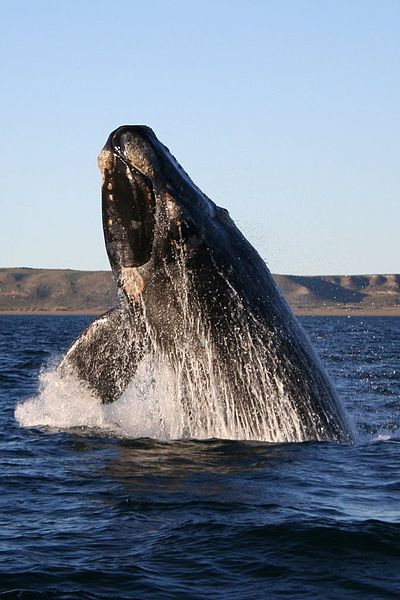Form and Function
Southern Right Whales (Eubalaena australis) has dark skin with white irregular patches on its throat and abdomen. Its tail is a broad triangle shape with a notch in the center. While in most baleen whales the two blowholes at the top of their head often merge into one (other whales such as the Sperm Whales also just have one blowhole) the Eubalaena australis two blowholes remain separate.
The Southern Right Whale has callosities on the front of their heads, on the chin, sides of the head, above the eyes, and on the lower lips. The largest callosity is called a bonnet. The callosities themselves are grey; the white appearance is due to large colonies of whale lice around them. These callosities can be used to identify individual whales (Cummings 1985).
The Eubalaena australis can grow up to 17 meters long and can weigh up to 100 tonnes! The male is usually slightly smaller than the female. The head of the Southern Right Whale when measured is one third of its total length!
While Southern Right whales are known to move quite slowly, a rate of 2.7 to 4.2 kilometers per hours, they can swim up to 15 kilometers an hour for short distances only).
The Eubalaena australis produces short, low frequency moans and pulses. Although the most known sound of the Southern Right Whale is a belch-like sound that is 1.4 seconds long. (Cummings 1985)
Another common behavior of the Southern Right Whale is “head standing”. This is where the whale enter a vertical position and extend their flukes (the two lobes of the whale tail) in the air and rock back and forth, often up to two minutes at a time! This is believed to either be a resting position or a courtship stimulus.
Another behavior commonly seen is breeching. The Southern Right Whale turns in midair and falls into the water on either their sides or back of the body. This may be to help dislodge parasites from the whales’ body, and also a display mechanism during mating. (Cumming 1985).
Click here to continue onto our Reproduction page or go back to our Home page!

